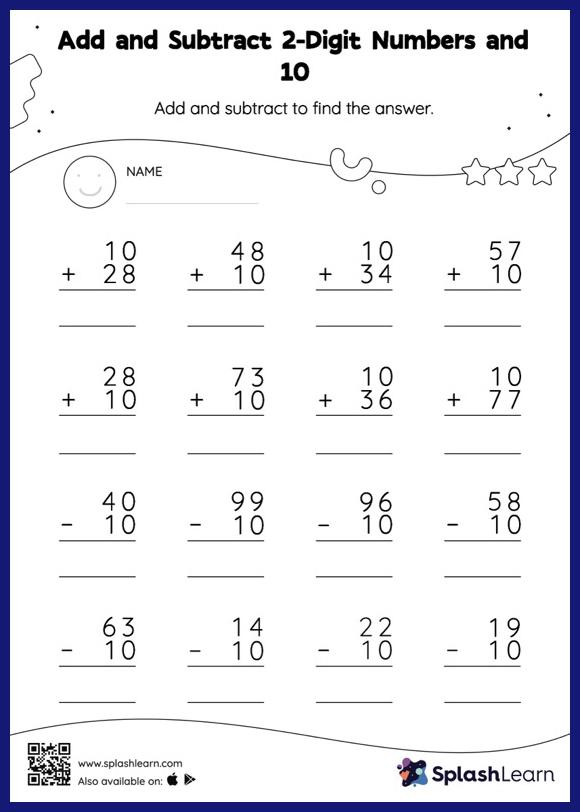Introduction
Let us look at two shapes:

Their color is also different. One is bigger, the other is smaller. That means their size is also different. Difference means a way in which two or more objects or persons are dissimilar.
But, difference in mathematics means something else. Let’s learn what difference means in math.
Recommended Games
Definition for Difference in Math
Difference in math is the result of one of the important mathematical operations, which is obtained by subtracting two numbers. It tells us by how much a number differs from the other. The aim of finding the difference in math is to tell how many numbers lie between the two given numbers. The difference in math symbol is minus(-).
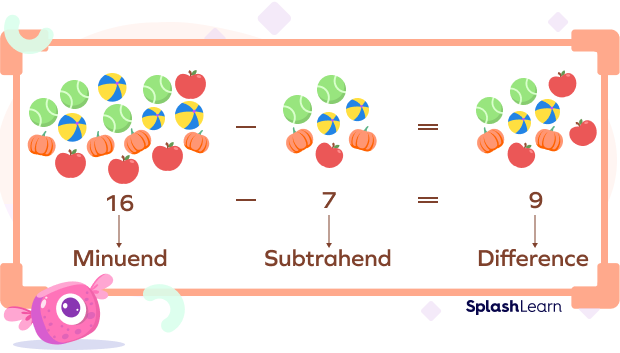
Minuend is the first number in the subtraction sentence. Subtrahend is the second number in the subtraction sentence and the result that we get is the difference between the two numbers.
Recommended Worksheets
Finding the Difference between Numbers Using a Number Line
The number line is useful in finding the difference of smaller numbers very easily. While finding the difference between the numbers on a number line, we move towards the left-hand side of a number line. We start with the minuend and move to the left to the number towards the subtrahend.
Example: Find the difference between 4 and -6 on the number line.
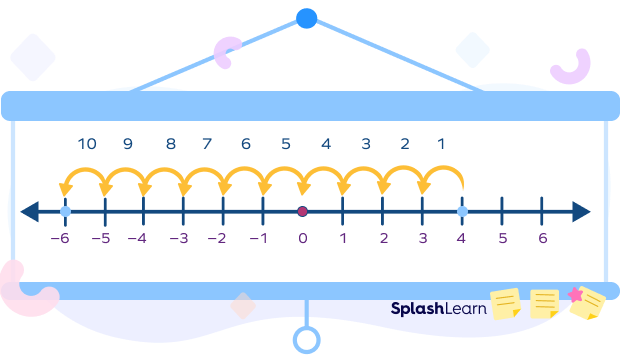
Difference =10
Finding the Difference between Two Numbers
The following steps are involved to find the difference between natural numbers or whole numbers –
- The first step is to place the values vertically in the order of their place values. Also, make sure the greater number should be on the top and the smaller one should be on the bottom.
- Start subtracting the numbers, starting from the ones place.
Without borrowing
For example, we have to find the difference between 2342 and 6758.
In this case, we saw that each digit of the subtrahend is less than the corresponding digit in the minuend. We get
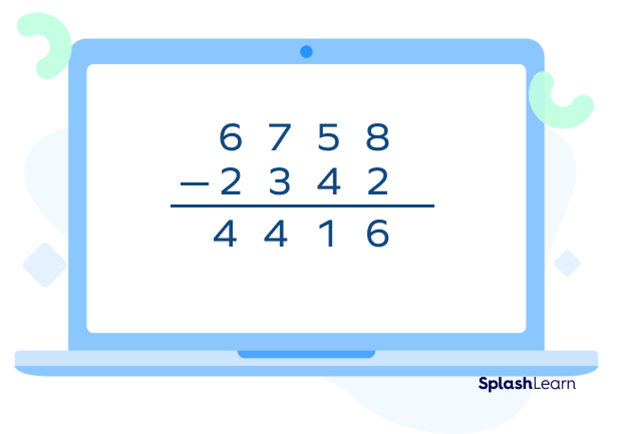
With borrowing
In this case, some digits in the subtrahend are greater at a certain place value than the corresponding value of the minuend.
Suppose we have to find the difference between 3456 and 1287.
- Subtract 7 from 6. We cannot subtract the larger number from the smaller ones, so we borrow 1 from the digit that is at the ten’s place in the minuend. In this case, the number is 5. So we borrow 1 from 5, and the 5 at the tens place in the minuend becomes 4. But the number at the ones place of the minuend, after borrowing 1 becomes 16. Now we can subtract 7 from 16 and we get 9 at the ones place as the answer.
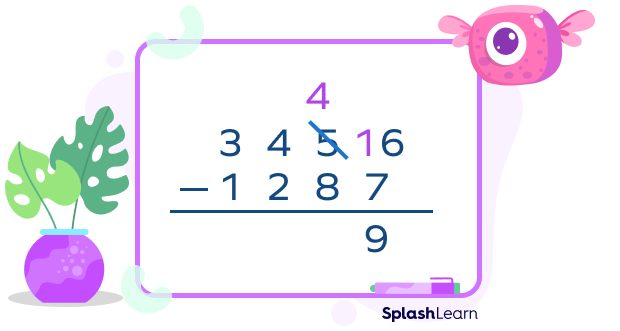
- We move to subtract the tens place digit. Remember, the digit at the tens place is now 4, instead of the 5. So, we need to subtract 8 from 4, which again is not possible. Thus, we repeat the steps again that we did for subtracting the digits at the ones place. We will borrow 1 from the digit at the hundreds place, and give it to 4 at the tens place. So, 4 at the hundred place of the minuend becomes 3 and the 4 at the tens place of the minuend becomes 14. Now we can subtract 8 from 14 and we get 6 as the answer at the tens place.
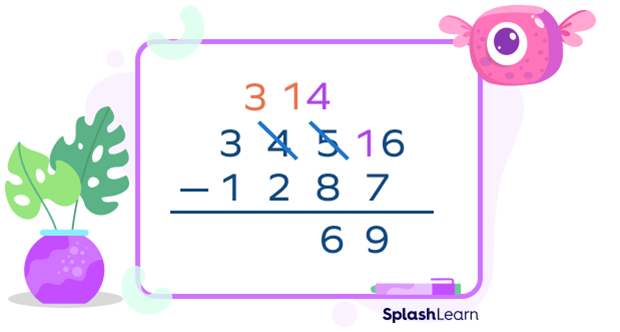
- Now, we look at the values at hundreds place. Here, we have 2 as the subtrahend and 3 as the minuend which can be easily subtracted. So, we get 1 as the answer at the hundreds place.
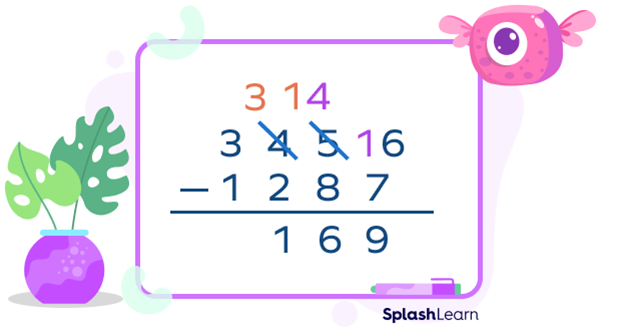
- At last, we check the values at the thousands place. We have 1 as the subtrahend and 3 as the minuend. Hence, we get 2 as the answer at the thousands place.
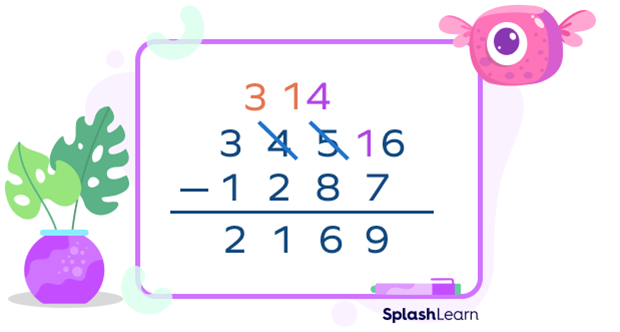
Hence, 3456 – 1287 = 2169
Finding the Difference between Two Decimal Numbers
The following steps are required to find the difference between two decimal numbers:
- Convert unlike decimals into like decimals.
- Place the decimal numbers such that the tens digit is below tens, ones is below ones, the decimal point is below the decimal point, the tenth digit is below the tenth digit, the hundredth digit is below the hundredth digit and so on.
- Subtract in the same way as we do for the whole number. Borrow if necessary.
- Place the decimal point in the difference exactly below the decimal point in the decimal numbers.
For example: We have to find the difference between 28.06 and 7.984.
We will first convert both the decimal numbers into like decimals by adding one zero in 28.06.
28.06 can be written as 28.060.
The next step is to subtract them like whole numbers and place a decimal point.
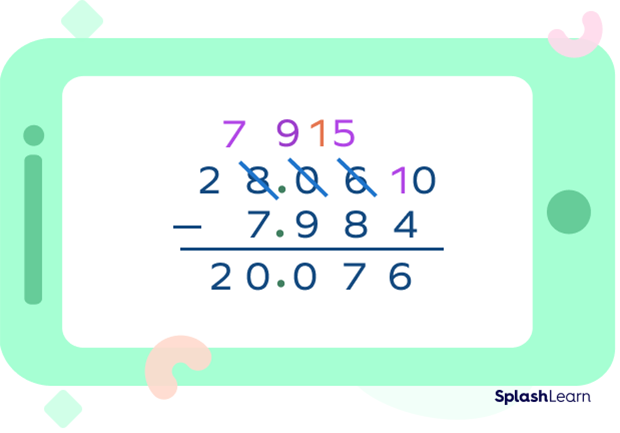
Finding the Difference between Two Fractions
In order to find the difference between two fractions, we have to use the following steps:
- Checking whether the fractions are like fractions or not. If they are like fractions, we will go to Step 4, else we will go to Step 2.
- When the fractions are unlike, we find the LCM of the denominators.
- Converting each fraction into an equivalent fraction having the denominator equal to the LCM obtained in the previous step.
- After the fractions become like fractions, subtracting them as we do for a like fraction, i.e., subtracting their numerators.
- Reducing the fraction to its simplest form, if required.
For example: A recipe requires 2/7 teaspoon salt and 1/3 teaspoon paprika. How much more paprika is added compared to the salt?
Fraction of salt needed in the recipe = $\frac{2}{7}$
Fraction of red pepper salt needed in the recipe = $\frac{1}{3}$
LCM(7, 3) = 21
$\frac{2\times3}{7\times3}=\frac{6}{21}$ and $\frac{1\times7}{3\times7}=\frac{7}{21}$
Difference = $\frac{7}{21}-\frac{6}{21}=\frac{1}{21}$
Solved Examples
1. Find the difference between -2 and 5 on the number line.
Solution:
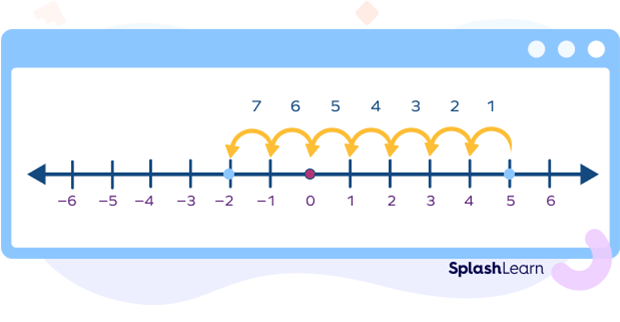
Difference = 7
2. There are 2052 ants in the garden. 1156 ants flew away. How many ants are left now?
Solution: Number of ants in the garden = 2052
Number of ants that flew = 1156
Number of ants left now = 2052 – 1156
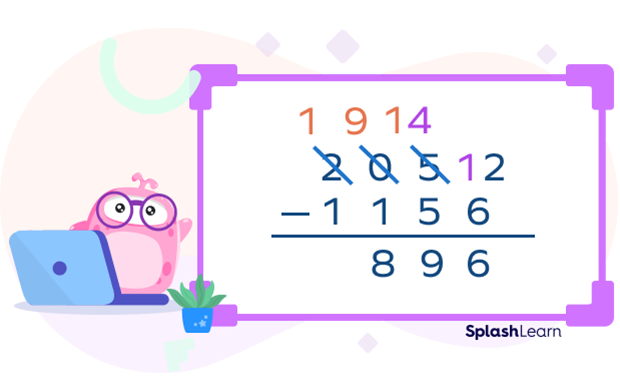
3. Peter purchased a syrup for $\$$40.00, a cookie box for $\$$19.50 and a hair oil bottle for $\$$30. She gave $\$$100 to the shopkeeper, how much money did the shopkeeper return as balance?
Solution: The amount Peter spent = $\$$40.00 + $\$$19.50 + $\$$30 = $\$$89.50
The amount Peter gave to the shopkeeper = $\$$100
The amount the shopkeeper will return in balance = $\$$100 – $\$$89.50
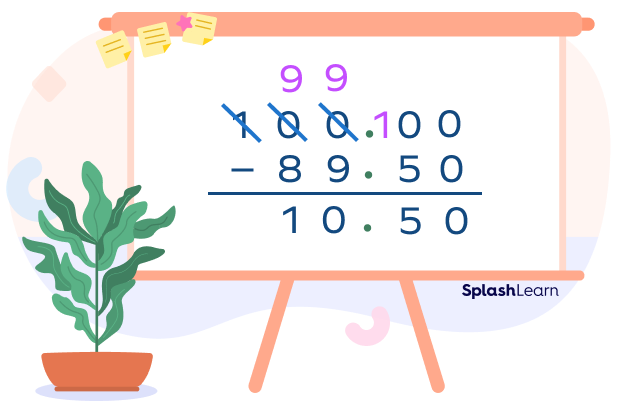
The amount the shopkeeper will return in balance = $\$$10.50
Practice Problems
Difference in Math - Definition With Examples
How much is $\frac{1}{4}$ more than $\frac{1}{16}$?
$\frac{1\times4}{4\times4}=\frac{4}{16}; \frac{4}{16}-\frac{1}{16}=\frac{3}{16}$
What should be added to $-10$ to get $-198$?
$-198-(-10)=-198+10=-188$
If Sam gave $\frac{1}{3}$ part of his land to his sister and $\frac{1}{2}$ part of his land to his brother, how much part of land will he be left with?
Part of land he gave =$\frac{1}{3}+\frac{1}{2}=\frac{5}{6}$
Remaining land =$1-\frac{5}{6}=\frac{6}{6}-\frac{5}{6}=\frac{1}{6}$
Frequently Asked Questions
How is the difference in math used in our daily lives?
Difference is used to figure out the distance, in understanding counting backwards, making change at the supermarket, and playing certain games, among others.
Is difference in math the same as subtraction?
A difference is the result of subtraction whereas subtraction is an operation to find the difference of two numbers.
How is “difference” different from “absolute difference”?
The absolute difference in math is the difference between two numbers irrespective of the sign. The absolute difference is always positive even if the numbers are negative. If A and B are two numbers, the absolute difference = A-B
On the other hand, the difference in math between two numbers is the result of subtraction. Here, signs matter. The difference can be negative as well as positive.

































